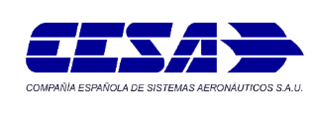
Project AEROEMA (Project for Industrial Research in the Field of Aeronautical Electromechanical Actuation of Flight Controls) has been approved by CDTI as a Strategic Program of Nation Corporate Research Consortia (CIEN) (IDI-20160823)
The consortium is led by CESA and consists of the following companies: Ikusi, Inespasa, Korta Group, Obeki and Skylife Engineering. The following research centers associated to various members of the consortium also participate in it: Tecnalia, AICIA-Universidad de Sevilla, CATC and Universidad de Mondragón.
The ultimate goal of the project is to take a decisive step toward the development of technologies for obtaining electromagnetic actuators for applications in critical aeronautical systems, with a view to the aircraft of the future, acting on the “More Electrical Aircraft” concept, and providing a greater safety, efficiency, noise reduction, greenhouse gas reduction and lower volume and weight of aircraft on-board systems, thereby increasing the competitiveness and sustainability of the aeronautical industry. In the current context, the leadership that CESA wishes to assume in the field of electromechanical actuation is only possible from a position supported by two main pillars: the capacity to develop own technologies; and fostering a robust network of competitive suppliers in the national territory.
CESA’s goals are:
- Developing high-efficiency engines to allow a high level of integration in various applications: primary and secondary flight controls, and other load locking and/or release systems for various aircraft systems.
- Consolidating control and monitoring technologies for critical flight control applications and providing greater intelligence for electromechanical actuators for non-critical applications, allowing to reduce operational costs significantly and increase in-flight reliability and safety of the various systems.
- Integrating efficiently the various mechanical solutions corresponding to each actuator architecture, including various anti-jamming or preventive devices that protect against the greatest problem currently faced by electromechanical actuators compared to hydraulic actuators.
CESA’s mission in this project will be coordination, defining the requirements for the various actuation systems, and integrating and validating actuation demonstrators.

